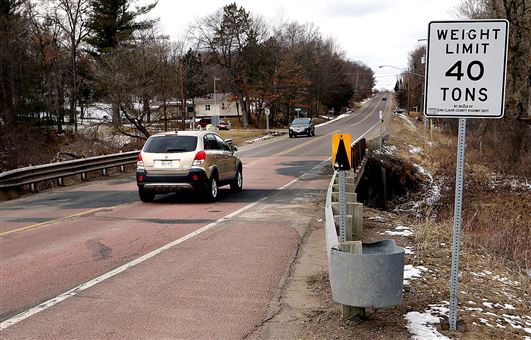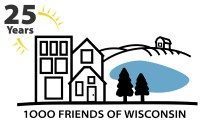—originally posted in the Leader-Telegram.
–by Joe Knight
Study: More gas tax dollars are being funneled into expanding highways in Milwaukee, Madison while rural roads deteriorate.
When Eau Claire residents fill their gas tanks, they have an expectation that a good portion of the per-gallon gas tax they pay goes toward maintaining local roads.
That used to be the case, said Steve Hiniker, director of 1000 Friends of Wisconsin, a Madison-based land planning organization. But now the bulk of those dollars is going to fund highway expansions in Milwaukee and Madison while rural roads across northwestern Wisconsin and elsewhere in the state fall into disrepair.
Rural roads in the state Department of Transportation’s Northwest Region, which includes Eau Claire County, ranked as the worst in the state, with 45 percent in poor condition, according to a 1000 Friends analysis of Wisconsin roads titled “Wisconsin’s Local Road Crises.”

Rural roads in the northern half of the state generally are worse than those in the south, with 41 percent rated as poor, according to the analysis.
The study concludes that of the 42,000 miles of rural roads statewide, about 14 percent are in failed, very poor or poor condition, while 44 percent are in need of immediate repair. The analysis found that 31 percent of urban roadways are in need of repairs.
Between 2000 and 2013, funds returned to local governments to maintain roads have declined by 45 percent, while money for expanding highways has grown by the same amount, according to the report.
“We’re basically robbing you of your money to expand highways in Milwaukee,” Hiniker said.
The declining transportation funding for roads has put local governments in a bind, especially given the spending limits in place for those governments that prevent them from raising additional revenue for road repairs.
“We’re pitting local services against each other for scarce funding,” Hiniker said. “Do you repair the potholes or repair a fire truck that needs funding?”
But state officials continue to build highways, especially in urban areas, Hiniker said.
Local problem
Difficulties keeping up with road repairs are no surprise to county government officials across northwestern Wisconsin. Eau Claire County is home to a 420-mile highway system that ranks near the bottom of the state’s pavement-conditions rankings.
The county has appointed a commission to study highways in an effort to improve the road network during the next 20 years.
Initially, at least, that process has involved borrowing money as those repairs are too costly to be included in the regular budget, County Board Chairman Gregg Moore said.
“Given the levy limits, it is probably going to be mostly borrowing,” Moore said of state-imposed spending limits on local governments.
Different views
Hiniker said if the state would back off of highway expansions, there would be adequate funding to fix rural highways across Wisconsin.
“The way we can do this without raising taxes anywhere is we can simply stop spending so much on highway expansions that aren’t needed,” he said.
DOT spokeswoman Peg Schmitt said highway expenditures in highly populated areas such as Milwaukee make sense, given that studies show traffic in those areas continues to increase. Last year the state registered 8 percent more vehicles compared with 10 years ago, she said.
“We’re seeing an increase in registered vehicles in Wisconsin,” she said.
About 85 percent of the state’s transportation budget goes for maintaining existing infrastructure, she said.
Major highway expansions undergo a thorough analysis that includes such factors as traffic projections, a crash history and an environmental review, Schmitt said. In addition, the Federal Highway Administration is involved in projects that include federal funding, she said.
Knight can be reached at 715-830-5835, 800-236-7077 or joe.knight@ecpc.com.
View the article at https://www.leadertelegram.com/News/front-page/2015/03/27/Rough-riding.html
